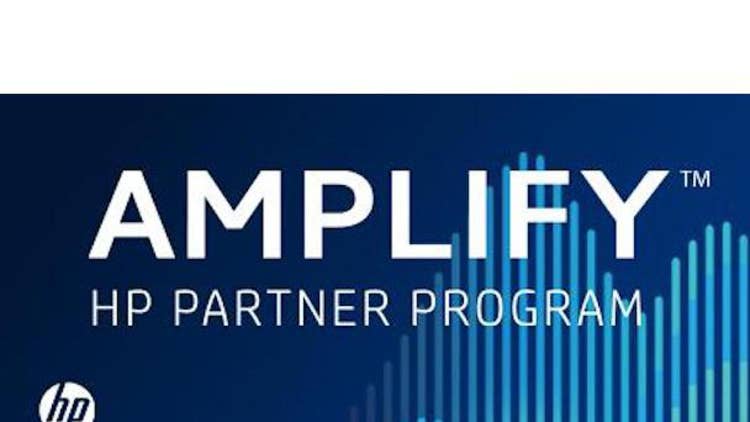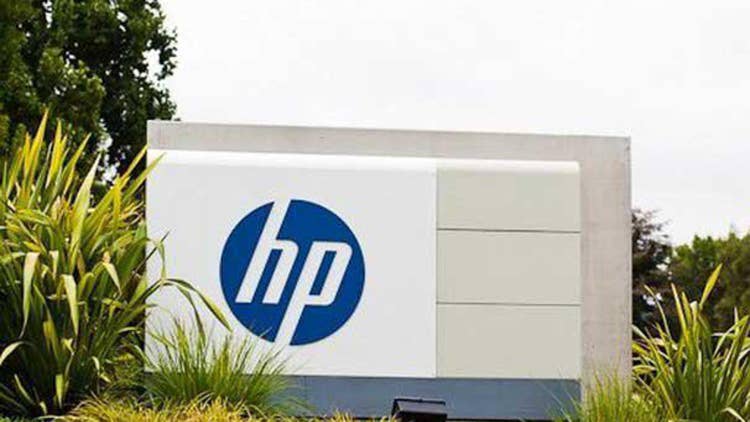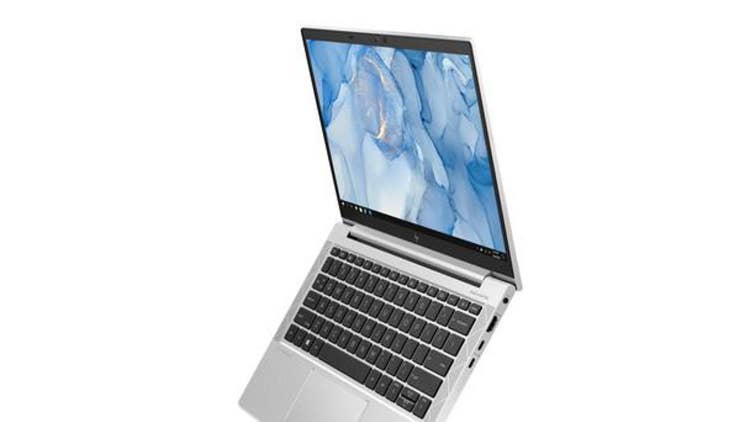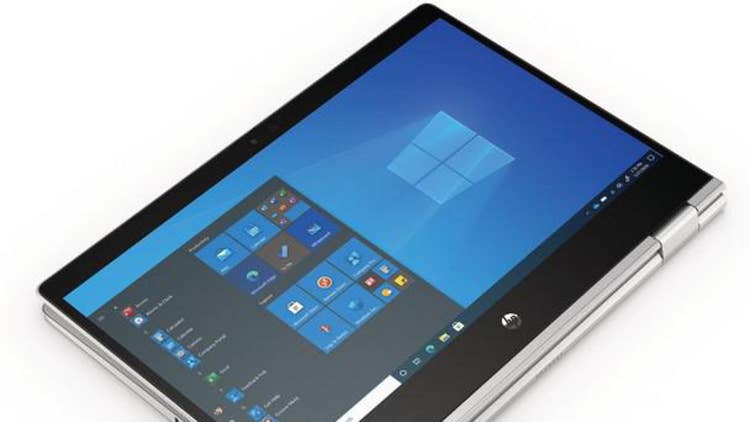HP’s Christoph Schell On Amplify Data Insights Launch, ‘Getting Better’ At Managing Supply Constraints
Schell, chief commercial officer at the PC and printer giant, tells CRN that HP is bringing predictive analytics to partners that will be highly useful in a supply-constrained environment.
Schell On The Record
HP Inc. is seeking to help partners enter into a new phase of data-driven growth with the launch of the HP Amplify Data Insights offering, according to Christoph Schell, chief commercial officer at the PC and printer giant. Launched on Wednesday in connection with HP’s virtual Reinvent 2021 partner conference, Amplify Data Insights aims to bring partners valuable analytics that can be used to help grow their sales with new and existing customers. The program requires partners to opt-in to share their own data, and then combines the partner data with other sources including HP data and third-party research. The offering is now available to partners in the Power tier of the HP Amplify partner program
The launch of Amplify Data Insights is also timely due to the ongoing PC supply shortage, which has made planning ahead more of a necessity than ever. The offering can provide predictive insights to partners that can help anticipate upcoming customer needs, which is particularly useful in a supply-constrained environment, Schell said.
“This platform is going to give our partners a lot more insights into how business will plan out. And the further they can predict that, the better,” he said. “Getting our ecosystem of partners and customers into demand planning—that’s where the opportunity is in this environment.”
In an interview last week at HP’s headquarters in Palo Alto, Calif., Schell provided more details on Amplify Data Insights and about how HP is addressing the PC supply situation--which stems from a shortage in key components such as semiconductors along with massive supply chain disruption.
What follows is an edited portion of CRN’s interview with Schell.

What are you offering with HP Amplify Data Insights?
There are three sources of data that flow into this. It’s data that we get from our partners, it’s data that we have ourselves—because of the products that are out in the market and that are providing data to us—and it’s third party data such as market research. At the very beginning, there were some partners that jumped in right away and said, “If I want to compete in an omni channel environment with marketplaces, I need to lean in here.” But there were also a lot of partners that were and continue to be quite skeptical—“Hey HP, what are you going to do with this data?” The ambition really is to equip our partners with opportunities. Here’s your customer and here’s how this customer is purchasing, here’s how this customer is using the equipment and the services that we make available to them. And here is most likely what your customer is going to go for in the future. We try to predict a little bit where this business is going.
So we have these three categories within HP Amplify Data Insights—descriptive insights, predictive insights and prescriptive insights. And I think in particular, in the pilots, the prescriptive insights is where we got a lot of positive feedback from our partners.
I think in the beginning they were like, this is maybe just a way for HP to get to my data. And then some of them were really fearful of us going direct. That’s not the plan. We are very committed to the partners—we don’t want to change that. But we want to get smarter, and we don’t want to be left behind in this channel ecosystem play that we have, relative to go-to-market competition that is going more direct. So for us it’s important that we have a direct touch on this customer, but the way we engage, the way we fulfill, the way we plan the future is staying indirect. But to do so, we need to strengthen that muscle.
I’m really impressed how far this has come. If you look at the amount of data that we are gathering here, it’s quite meaningful.

I know that HP Amplify has had data sharing as a component since launching last November — how is this advancing that initiative?
Up until now, we managed to onboard the data from these three sources into one database. We had a couple of pilots to inform how we think about HP Amplify Data Insights. And now we’re opening it to all our Power partners—all the ones that are qualified to engage with us. We’re moving from the pilot stage to taking it to everybody globally.
What have you been hearing from partners about the value of this data sharing program?
Just before the summer, I got a bunch of calls from partners that were with us in some of the pilot programs, and they were like, “Christoph, this is awesome.” I have, all of a sudden, insights into my existing accounts, benchmarks from other partners in other countries, operating in similar verticals, that I never had before. And this is actually informing my whole plan. This is informing how I’m engaging. I think I have a much better understanding of the opportunities ahead—but also [about] what my customer might be looking for from me in the future. And so there’s real value here … Also the engagement is not dependent on getting together. They can go on the HP portal, they can start inquiries and get the information pretty much every minute of the day, whenever they want to do it. So, the frequency of engagement is increasing—and by that, obviously, the opportunity is increasing.

What’s the long-term value and growth opportunity here for partners?
The long term value is to get into outcome-based engagements with their customers—making the relationship strategically more important, and also stickier. By doing that, I think the barriers of entry that our partners will generate [to] keep competition away are going to be much better.
[For the growth opportunity], two things really come to mind. One is to increase the share of wallet that our partners occupied within the customers from a personal systems and printing point of view. The second one is to build on top of hardware engagements and start selling more and more services. This can be digital services, but this could also be physical services. And bringing those two together—I think particularly in our printing category—is a huge opportunity for our partners.

How will this platform be helpful in the current supply-constrained environment?
This platform is going to give our partners a lot more insights into how business will plan out. And the further they can predict that, the better. Because we are relying on our partners’ forecasts right now to inform our own supply chain. And the more detail that is [included]—not just the amount of PCs that they want to sell, but what type of PCs, down to the platform, down to the SKU level—this is where real quality is created for managing in a supply-constrained environments. So I think getting our ecosystem of partners and customers into demand planning—that’s where the opportunity is in this environment.

Do you have any estimates on when the PC supply constraints could see significant improvement?
The first thing is, this is not a linear thing—it’s not going to linearly get worse or linearly get better. This is a very volatile situation.
Our industry went into COVID with already a bit of a shortage on CPUs. That actually got better during COVID. The next gating item were panels, and it wasn’t so much the glass—it was more the ICs that sit on that panel. That is still a bit of a challenge but it has actually improved significantly. What is now the challenge is very much the ICs themselves. We have ICs obviously across all of our portfolio. We’ve never had to analyze it in as much detail as we did over the last couple of months and quarters. It has required us to speak directly to suppliers that are in that IC supply business—that’s not necessarily something that the industry has been doing before. Now we have to. When we talk about CPUs and panels, the amount of industries that are impacted by that are significantly less than when we talk about an IC shortage. ICs go into pretty much everything.
When you look into integrated circuits, it’s a bit like oxygen—everybody has them. The mobile phone industry, the IT industry across pretty much all the categories there, the server business and storage business. Automotive is a huge, huge customer for ICs—in particular as they are migrating from combustion engines to electric vehicles. An electric vehicle uses a lot more ICs. And so there is this challenge of, demand is up across all of these categories. And so there’s a capacity challenge. And at the same time, while everybody’s trying to bring capacity up, you have certain countries being impacted again, on and off, by COVID. And so it is a very volatile situation. So this is what we’ve been managing for the past 18 months. And we will continue to manage this. I’m not going to give you a timeline about when this will come to an end—because I don’t know.

You’ve been working more closely with components suppliers — do you see that easing the constraints in the near future?
I think we see that already. I think the closer you work with a supplier—the more strategic the supplier is into the value proposition that you’re selling—the better the outcome. And the degree of how we work together has intensified.
For partners who are dealing with constraints and delays, what sort of encouragement do you have for them?
The encouragement I have is that we are working on it. We are learning every day how to operate better in a supply-constrained environment. That doesn’t mean that the supply constraint will go away. We’re just getting better at managing it. And we’re far from perfect. But if I go back to where we were a year ago compared to where we are now, I think things have improved. When we give a date, more often than last year, that will actually stick and we’ll ship to that date. When we give you an outlook on, “we think this particular product will ship in X days”—we’re getting more accurate there.